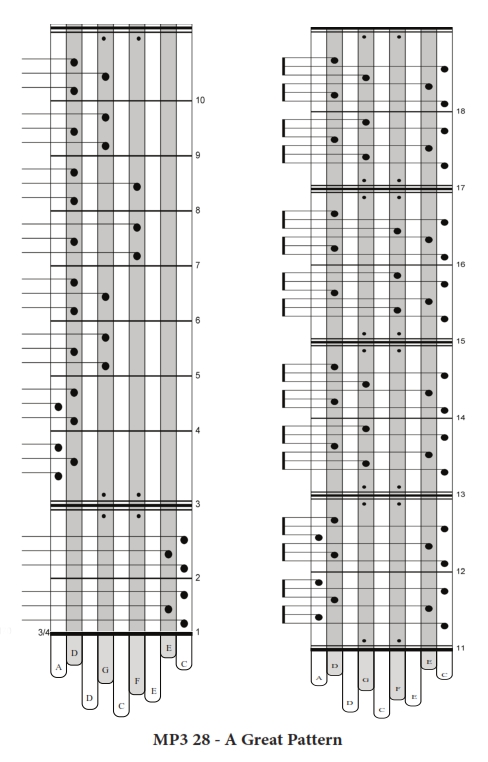
Use of this website constitutes acceptance of the Privacy Policy and User Agreement. Copyright © 2020 Kalimba Magic. All Rights Reserved.
Kalimba Magic sansulas are normally sold in the A Minor tuning, which produces music of an enchanting, mystical and melancholy nature. I created the C Major sansula tuning in 2011 in response to a customer’s request for a sansula in C. I love this tuning; it is simply happy and positive, potentially majestic and even euphoric. I am often struck by how easy it is for the C Major sansula to produce music of great simplicity and beauty. If something gorgeous happens in the midst of my time spent with it, I take careful notes (whenever i come up for air!).
The C Major sansula book, a downloadable PDF, covers some of what this delightful instrument can do. With 48 pages and 32 original compositions and exercises written just for this tuning, this book gives you enough material to occupy you for many months as you improve your sansula skills. Included among these compositions are the two YouTube videos I have made with the C Major tuned sansula and the C Major tuned kalimbula.
The C Major Sansula Instructional Download will work for any of the sansulas (or the kalimbula), but to do that, you will have to negotiate the retuning of your sansula into C Major. This is not difficult to accomplish and you can do it on your own. (See link to discussion on retuning the sansula in Related Articles, below.) Sansulas in several tunings are also available at Kalimba Magic, including the C Major tuning (I think we may be the only people in the world to offer this tuning). We can also retune your existing sansula as part of our “Kalimba Doctor” services.
What’s special about the C Major sansula tuning?
Below is one of the more advanced lessons, “A Great Pattern”, which is made from very simple left and right thumb patterns. When the simple left and right patterns are combined, an unexpectedly rich melody and chord progression emerges. The audio strip below the tablature contains the MP3 download for this lesson. Isn’t kalimba music so cool?



Sign up for our newsletter and free resources with your email address:
We pinky promise not to spam you and to only send good stuff.
 Assist Paul Tracey Rebuild His House in Pacific Palisades
Assist Paul Tracey Rebuild His House in Pacific Palisades 8-Note Spiral Kalimba Turned into a Student Karimba
8-Note Spiral Kalimba Turned into a Student Karimba Seek to Infuse Your Musical Moments With Beauty and Magic
Seek to Infuse Your Musical Moments With Beauty and MagicUse of this website constitutes acceptance of the Privacy Policy and User Agreement. Copyright © 2020 Kalimba Magic. All Rights Reserved.